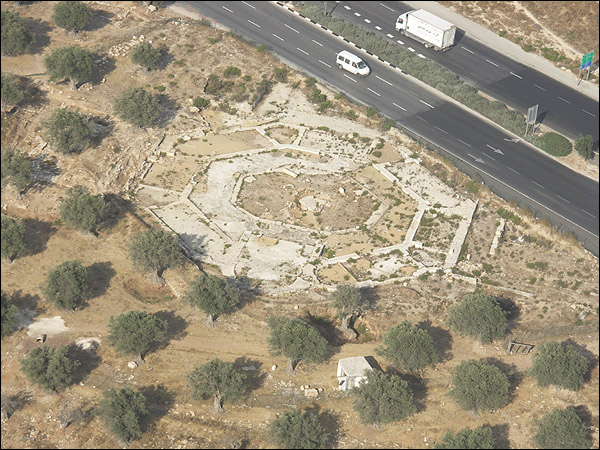
|
The identification of ancient Ramat Rahel
Identifying biblical Ramat Rahel is still an open question. Three possibilities have been proposed: Beit Hakerem (House of the Vineyard) Aharoni claimed the site was the biblical Beit Hakerem (House of the Vineyard), one of the places from which flaming warning signals were sent to Jerusalem at the end of the First Temple period (Jeremiah 6:1). The site was mentioned in the LXX supplement to Josh. 15: 59a as being near Bethlehem, and was also mentioned in Nehemiah 3: 14 as a centre of one of the districts in the province of Yehud. Aharoni hypothesized that the site was built on one of the king's vineyards and that this is the source of the site's name. Netofah Mazar identified the site as Netofah, a site mentioned in 2 Sam. 23: 28; 1 Chr. 2: 54; et. al. (cf. Ez. 2: 22; Neh. 7: 26; 12: 28) as near Bethlehem. 
MMŠT Barkay and others identified the site as MMŠT, which is mentioned on the lmlk stamp impressions. The names of four local centres in Judah are mentioned on these impressions: Hebron, Sochoh, Ziph and MMŠT. The exact function of these centres is highly disputed but they must have served the Judaic monarchy, perhaps for tax collecting and storage. The edifice found at Ramat Rahel dates to the earlier part of the Iron Age and the large collection of lmlk stamp impressions led Barkai to identify the place with one of the royal centres. Whatever the ancient name of the site, during the Byzantine period, the town, as well as the church and the monastery located here, was called Kathisma, after the holy well (Bir Kadysmu), where, according to Christian tradition, Mary rested on her journey to Bethlehem. 
|
|
